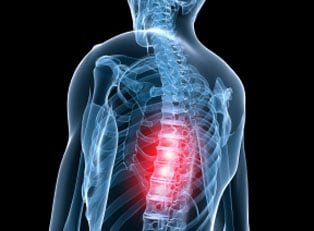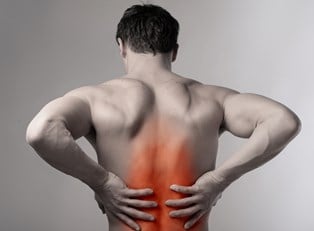It is estimated that up to 80% of all American adults will experience some form of back pain at least once in their lifetime. Back pain is not a condition in itself; rather, it is a symptom that can point to many different conditions that range in severity.
Most cases of back pain are not cause for great concern, as they will usually correct themselves within a week or two. However, sometimes back pain is caused by much more serious conditions that require medical attention as soon as possible. It is important to know how to identify which back pain symptoms are normal and which you should be worried about.
Symptoms
The typical symptoms of back pain include:
- Muscle aches
- Pain that radiates down your leg
- Limited flexibility or range of motion in your back
- Shooting or stabbing pain
Most cases of back pain will improve with simple home treatment and self-care. However, if you begin to experience other, more serious symptoms in conjunction with your back pain, you should see your doctor. These include:
- Bladder or bowel problems
- Fever
- Weakness, numbness, or tingling in one or both of your legs
- Unexplained weight loss
Additionally, if your back pain is severe and doesn’t improve with rest or it follows a fall or a blow to your back, you should have it looked at by a doctor. If you are experiencing back pain for the first time after age 50, if you have a history of cancer or osteoporosis, if you have used steroids in the past, or if you have ever abused drugs or alcohol, you should seek medical attention immediately.
Prevention
Back pain can be avoided or prevented in the future if you improve your physical condition and practice proper body mechanics. Things you can do that promote a healthy and strong back include:
- Exercise: Low-impact aerobic activities can be good for strengthening your back muscles because these types of exercises don’t strain it at all. Walking and swimming are good options for this, as well as abdominal and core-strengthening exercises.
- Weight loss: Obesity can strain your back muscles, which is why maintaining a healthy weight can prevent unnecessary injury.
- Good posture: Having good posture while sitting and standing reduces stress on the back muscles in your lower back. When sitting, try to remember to change your position at least every half hour to prevent cramps and stiffness in your back.
- Avoid heavy lifting: If you are unable to avoid heavy lifting altogether, make sure to lift correctly by keeping the stress off of your back muscles. The best way to lift is to let your legs do all of the work by keeping your back straight, avoiding twisting, bending only at your knees, and keeping the load close to your body. Also, try to use a lifting partner as much as possible, especially when objects are very heavy or awkward.



